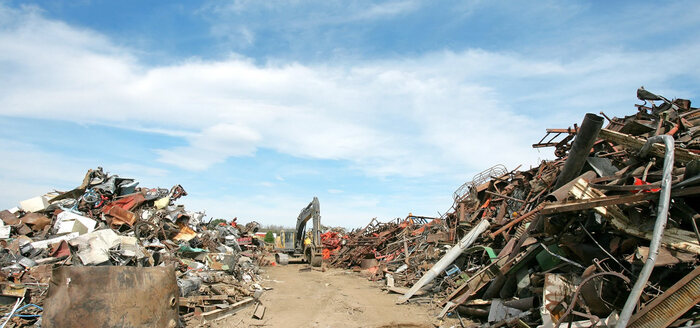

NOV 01, 2021
Most people think that scrap metals end up tossed in the landfill. Though they may not be totally wrong because some metals are not reusable.
Nevertheless, a reasonable amount of scrap metals has economic value. They must pass through some processes before becoming furnace-ready materials that can be used to manufacture new equipment. However, the process must be followed strictly to minimize loss and avoid complications.
Sorting
Sorting and classification of the metals begin at the scrapyard. This process involves separating metals from the mixed scrap metal stream or the mixed multi-material waste stream.
Then they are sorted into various types. Scrap metal comes in various types which are classified into Ferrous and Non-Ferrous metals. The distinct difference between these two is that Ferrous metals contain iron and are magnetic while non-ferrous metals such as aluminum, copper, lead, zinc etc. do not have such characteristics.
Sorting is crucial for industrial manufacturing and can be done in an automated sorting process using magnets and sensors.
Metal Processing
The next stage is processing which involves sorting and reduction into smaller bits to make melting easy. The type of method used is dependent on the metal itself. While most scrap metals are reduced by shredding, some are reduced by touching and bailing. The overall goal is to reduce the metal into smaller bits.
When the metals have been reduced, then they are melted down in large, hot furnaces for two main reasons. The first reason is to remove impurities present in the metal. There are different types of impurities in scrap metals thereby demanding different methods. The most popular method used for removing impurities is Electrolysis—passing a direct electric current through the molten metal. The second reason is to make the solidifying stage of the process possible.
The metals are solidified into ingots—blocks of pure metals suitable for transport, storage and further processing—in the solidifying stage. During the solidifying stage, the melted metals are placed on the conveyor belt to cool and shape into blocks.
Manufacturing
The last stage in the recycling process is Manufacturing. The blocks are either transported to manufacturing companies that use metal for most of their productions or are stored for future purposes.
Unlike other recycled products, metals can be recycled numerous times without reducing the quality of the final product. Recycling metals reduces the toxic wastes, further damage to the earth from the extraction of metal ore and greenhouse emissions. 354 000 tons of carbon dioxide, the main greenhouse gas is saved per 100 000 tons of recycled aluminum according to research conducted by the Imperial College. Also, our natural metal ores are preserved for longer years due to scrap metal recycling. This is one of the reasons selling off your scrap metals would make the world a safer place.
If you are still unsure of where and how to sell your scrap metal, or you want further clarifications, RCM Recycling has knowledgeable and experienced staff that will answer your questions.